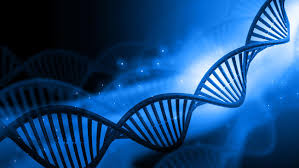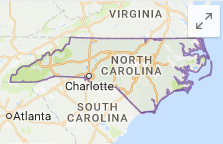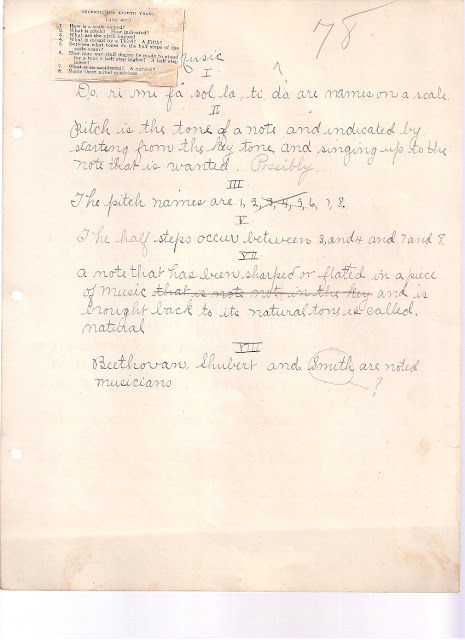Originally published on genealogyatheart.blogspot.com on 1 Oct 2015.
I’ve been blogging a lot about education as I’ve shared my husband’s grandmother’s 8th grade final exams. As I continue to do research for the Kinship Determination paper in fulfillment of one of the portfolio requirements for obtaining accreditation as a Certified Genealogist, I found several references to a severe teacher in the early 1800’s in Pennsylvania. I can’t share much due to following the directions for the submission but it’s hard for me to get the meanness of that teacher out of my brain! He was well remembered nearly 50 years after he taught but those memories from his students weren’t at all pleasant.
We hear so much today about infusing rigor and insuring accountability in public education. In the earlier days of our country, that was not a concern. Developing “good” citizens was what was most important. There were no teacher certification programs, curriculum standards or laws related to compulsory student attendance. Yet students learned. We moved from an agrarian society to a factory model and now, to a technological one. Certainly different skills are needed today than in the early 1800’s, however, the basics are just as relevant as they were in the past. Instilling a desire to become a lifelong learner and teaching a student how to seek out needed information remains vitally important.
My grandfather received little formal education in his native Austria-Hungary (now Croatia). Today, we would consider him to be illiterate. My grandmother received 3 years of formal public education in the United States after she emigrated. My mother was the oldest child of this immigrant couple. Mom received little educational support at home as the focus was on bringing money into the household to insure security.
My mother’s elementary school years were at Glen Park Elementary in Gary, Lake County, Indiana:
 |
| Glen Park Elementary School, Gary, Indiana |
I took this photo when I last visited the area in December 2001. My mom had wonderful memories of the warm teachers who instilled in her not only the basics but the culture of the community. Mom said she cried when she graduated from the school and had to attend Franklin Junior High. She was taken under the wing of the Home Economics teacher at Franklin and continued to love school.
Unfortunately, the Great Recession occurred and it was necessary for her to help her family financially so mom quit attending Lew Wallace High School in 10th grade to go to work. At the time, she was the most educated individual in her family.
Being a second generation away from immigration, my educational experiences were very different than my mothers. Noncompulsory kindergarten was available so I attended a church school’s half day morning program. I was fortunate to start my schooling with a phenomenal teacher, Bethel Ebelglebin Mattingly. “Miss E” was the founder of the Jack and Jill Academy at Augustana Lutheran Church in Hobart, Indiana. I was reading, printing and could add and subtract two digit numbers by the time I finished her program. Once a month we went on a field trip – to the community library, the movie theatre (where Miss E. had kicked off her shoes and they happened to roll down the aisle. We had a hunt to find them when the movie ended!), my father’s farm, picnic in the park, and fishing at Lake George are all fond memories. The most important skill Miss E. taught us, though, was how to work with others.
One morning, about a month into the school year, Miss E. decided to move student seats around. I was devastated to be moved away from my then best friend, Melanie, and placed between two boys. These boys were alot slower than I was academically and would probably be called ADHD today. When my mom picked me up from school I informed her I wasn’t going back if I had to sit at the new table. Mom said that Miss E was very smart and must have a good reason to have made the seat changes so we had to respect the decision. I didn’t care, I was not going to go back. I had been bumped into all morning long, had felt the need to pick up all the crayons they dropped and didn’t like the noises they made. Mom said she would speak with Miss E. but I was going back to school.
Mom followed through on her promise. I stayed the next morning and was sure my seat would be changed. Except it wasn’t. Mid-morning when the class went out for recess Miss E. told me we needed “a chat.” She explained to me that I was a model student and that she had hoped that I would help out the boys who needed to develop some of the skills that I had. She asked if I wanted to be a teacher some day. I told her I was going to be a cowgirl. Miss E. said sitting between the boys would help me be a better cowgirl as cows needed extra effort to get them to go where you wanted. Personally, I didn’t understand how the boys needed to be moved along like cattle nor did I care to move them but Miss E. was so kind and made me understand that the class was a team and we needed to move forward together. My seat remained and I learned to get along.
Mrs. Mattingly passed away in 2009. We kept in touch over the years and she was very pleased to learn that I did, indeed, become an educator and not a cowgirl. Towards the end of her life, we would chat monthly. If she called me when I wasn’t home she would leave a message on my answering machine that said, “This is Miss E. I’m sorry I missed you, Lori dear. I hope you’re being a good girl. We’ll talk soon.”
My husband loved those messages since I still tend to be feisty (as the Walgreens clerk labeled me last Sunday but that’s another story) and he still kids me about being a “good girl.” He saved on tape one of the last messages she left and I’m so glad he did.
Below is a picture of Mrs. Mattingly on her birthday:
 |
| Bethel Ebleglebin Mattingly |
My parents separated during my kindergarten year so my mother and I moved back to the family home in Glen Park. The next 8 years were spent at St. Mark’s School. Grades 1-4 were in the old building and grades 5-8 were in what was then the new building (below). Only headstart is offered currently:
 |
| Former St. Marks Roman Catholic School, Gary, Indiana |
Although I received a rigorous education at St. Marks it didn’t include the loving nature of Miss E. Our early grades had 50 students in a class, 2 classes per grade level so the teachers didn’t have alot of time for warm and fuzzy. My teachers were either extremely old and I was in the last class they were teaching, or very young and they didn’t have the process of running a classroom down. I had one exceptional teacher in middle school who left to seek fame and fortune in California and was never heard from again.
I developed a great dislike of math due to an incident at the chalkboard below (which is now a church office):
 |
| Former 1st Grade Classroom, St. Marks Roman Catholic School, Gary, Indiana |
Our teacher would place math problems on the board and we had to go up to the board in line based on the row she called to complete the problem. I didn’t like the feel of chalk on my hands and I hated the squeak it made. My goal was to get done as quick as possible. I was able to do that by figuring out which problem I would get ahead of time, calculating the answer in my head and then quickly writing the answer and returning to my seat. Except one late fall day the student in front of me needed to tie his shoe so Sister Martina made him get out of line and told me to go around him. I did and went to what should have been my problem. Sister told me to move to what would have been his problem. I completely blanked out. I stood there and couldn’t process. She spoke louder to me which didn’t help. I began to cry. She told me I could stand there until I got the answer. This wasn’t said in a threatening way but I felt added pressure to complete what I couldn’t so I cried louder. Some sweet girl whispered the answer and I wrote it down and returned to my seat. I decided that moment that I didn’t like math, would never like math and couldn’t do math. I’ve been battling those thoughts ever since. I know I’m not alone; I guess that’s why I relate so well to the comment my husband’s grandmother wrote on her failed 8th grade Algebra exam “Not that old story again!” (see blog of 10 Sep 2015 More of Elsie’s Exams – An Indiana 1910 End of Course Math Assessment)
In reflecting on my education, what I know of my mom’s, and Elsie’s from her exams, I’ve reached the conclusion that the most important part of education is not the rigor of the curriculum. What matters most is that the student feels it’s safe to tackle the rigor and that the instructor listens and cares.
Funny how this is apparent in the historical records, too, but widely ignored. Reminds me of the quote by George Santayana,
“Those who do not remember the past are condemned to repeat it.”
In education we constantly look for the new big idea instead of looking to the past and finding the answer was there all the time.











